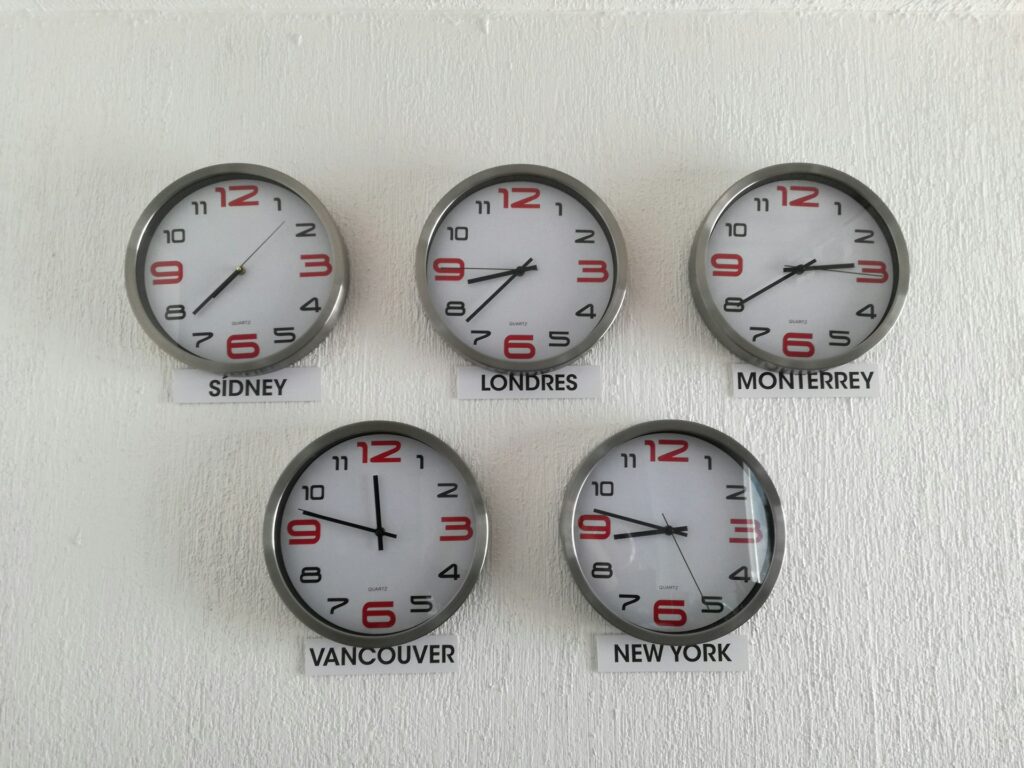When new traders start in forex, they often feel the need to trade constantly, watching every economic report and reacting to all market moves. Forex, which operates 24 hours a day, five days a week, can seem like an endless opportunity. However, trying to trade all the time can drain your energy and your account. Unlike the stock market, forex runs on the business hours of different regions around the world. This means trading can happen at any time, but not all times are equal.
Understanding the best times to trade is a vital first step in mastering how to invest in forex. It can help you avoid burnout and increase your chances of success. By focusing on the key market hours and planning accordingly, you can trade more efficiently without staying awake all night.
Forex Market Hours
The forex market operates around the world, but each region has its own trading session. Here’s a look at the four main markets and when they are open (Eastern Standard Time):

- New York: 8 a.m. to 5 p.m. – New York is a major player in the forex market since the U.S. dollar is involved in about 90% of trades globally. Major economic events or news from the New York Stock Exchange can immediately impact the U.S. dollar’s value.
- Tokyo: 7 p.m. to 4 a.m. – Tokyo is the largest market in Asia, opening the door for active trading in pairs like USD/JPY, GBP/JPY, and GBP/USD. The Bank of Japan often influences market activity during this time, making it a key market for traders who focus on the yen.
- Sydney: 5 p.m. to 2 a.m. – Sydney kicks off the trading week on Sunday afternoon. Although it’s the smallest of the major markets, it’s still important as the first market to reopen after the weekend.
- London: 3 a.m. to noon – London is the largest forex trading center in the world, responsible for about 43% of global forex trading. The Bank of England plays a major role in shaping the market through its interest rate decisions and monetary policies.
When Is the Best Time to Trade Forex?
Since the forex market is open continuously during the week, it’s crucial to know when the best trading opportunities occur. The most active and profitable times are when two markets are open at the same time, leading to more significant price movements.
For example, when only one market is open, currency pairs often move within a tight range of about 30 pips (a pip is the smallest price change in a currency pair). However, when two markets overlap, you can see movements of 70 pips or more, creating more opportunities for profit.
Key Overlap Periods
The most important overlaps in the forex market occur when major trading sessions overlap. These times offer the highest levels of trading activity and volatility, giving traders more opportunities:
- U.S./London (8 a.m. to noon): This is the most active overlap, with more than 70% of forex trades happening during this time. Both the U.S. dollar and the euro are popular currencies during this overlap, making it an ideal time to trade.
- Sydney/Tokyo (2 a.m. to 4 a.m.): While less active than the U.S./London overlap, this period still sees notable trading, especially in currency pairs like EUR/JPY.
- London/Tokyo (3 a.m. to 4 a.m.): This overlap has less trading activity, but there are still opportunities, particularly for traders in Asia.
The Impact of News on Forex Markets
In addition to understanding trading hours and overlaps, it’s important to stay aware of major news releases. Significant news can impact currency prices, even during quieter market periods. For instance, a major announcement about interest rates or inflation can cause sharp price changes in a matter of minutes.
Here are some key types of news to watch out for:
- Interest rate decisions: Central banks often raise or lower interest rates based on economic conditions, which can significantly affect currency values.
- Inflation data (CPI): This data can influence central bank policies and impact currency values.
- Economic growth (GDP): Countries with strong economic growth tend to attract more foreign investment, which strengthens their currency.
- Unemployment rates: Lower unemployment generally signals better economic health, which can lead to a stronger currency.
Conclusion
The key to successful forex trading is knowing when to trade. By focusing on the most active market hours, particularly when markets overlap, you can maximize your chances of making profitable trades. Additionally, keeping an eye on important news releases can help you anticipate market movements and take advantage of key trading opportunities. By understanding these elements, you can develop a trading plan that fits your schedule and boosts your success in the forex market.

